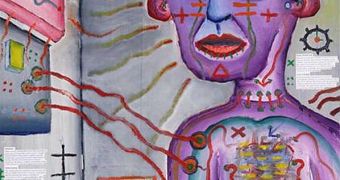A group of investigators based at the RIKEN Brain Science Institute in Japan argue in a new study that people who suffer from schizophrenia tend to exhibit a larger number of so-called jumping genes in their brain than their healthy peers do.
These genes, also known as retrotransposons, are found in abundance in the schizophrenic brain, say neurobiologists led by expert Tadafumi Kato, PhD. His group explains that jumping genes are mobile genes capable of copying and pasting themselves at random spots across the human genome.
They are not a part of the gene family responsible for coding proteins, which makes up just 1 percent of the entire human genome. Retrotransposons make up about 50 percent of all genes in the human body, but their purpose is not accurately and fully understood at this point.
According to Kato and his team, jumping genes may be responsible for altering neural development patterns early on in life for some people. If a brain is to develop properly, it is absolutely essential that these patterns be followed closely. Any disturbances may up the risk of mental disorders.
The scientists say that this is precisely what happens in schizophrenia. It could be that the higher number of retrotransposons present in the brains of some people makes them more likely to develop schizophrenia later on in life, PsychCentral reports.
The recent investigation was focused on a retrotransposon called long interspersed nuclear element-1 (LINE-1), which previous studies demonstrated to play a role in human brain cells. The study discovered that more LINE-1 was present in the brains of schizophrenics after death.
Kato and his group analyzed a total of 120 human brains after death, out of which 13 were collected from people with this mental disorder. The brains of schizophrenics were found to contain much higher concentrations of LINE-1 than those of their healthy peers.
At the same time, the analysis revealed higher concentrations of this nuclear element in the brain stem cells of people with the condition. Elevated LINE-1 amounts were also discovered near neurons in charge of facilitating the communication between various regions of the human brain.
“LINE-1 retrotransposition may be a mechanism to generate cognitive diversity in the human population,” comments University of California in San Diego researcher, Alysson Muotri.
“This mechanism may have evolved to create outliers in the population, people with extraordinary abilities. On the other hand, the other end of the spectrum may be patients with schizophrenia or autism,” she concludes.

 14 DAY TRIAL //
14 DAY TRIAL //